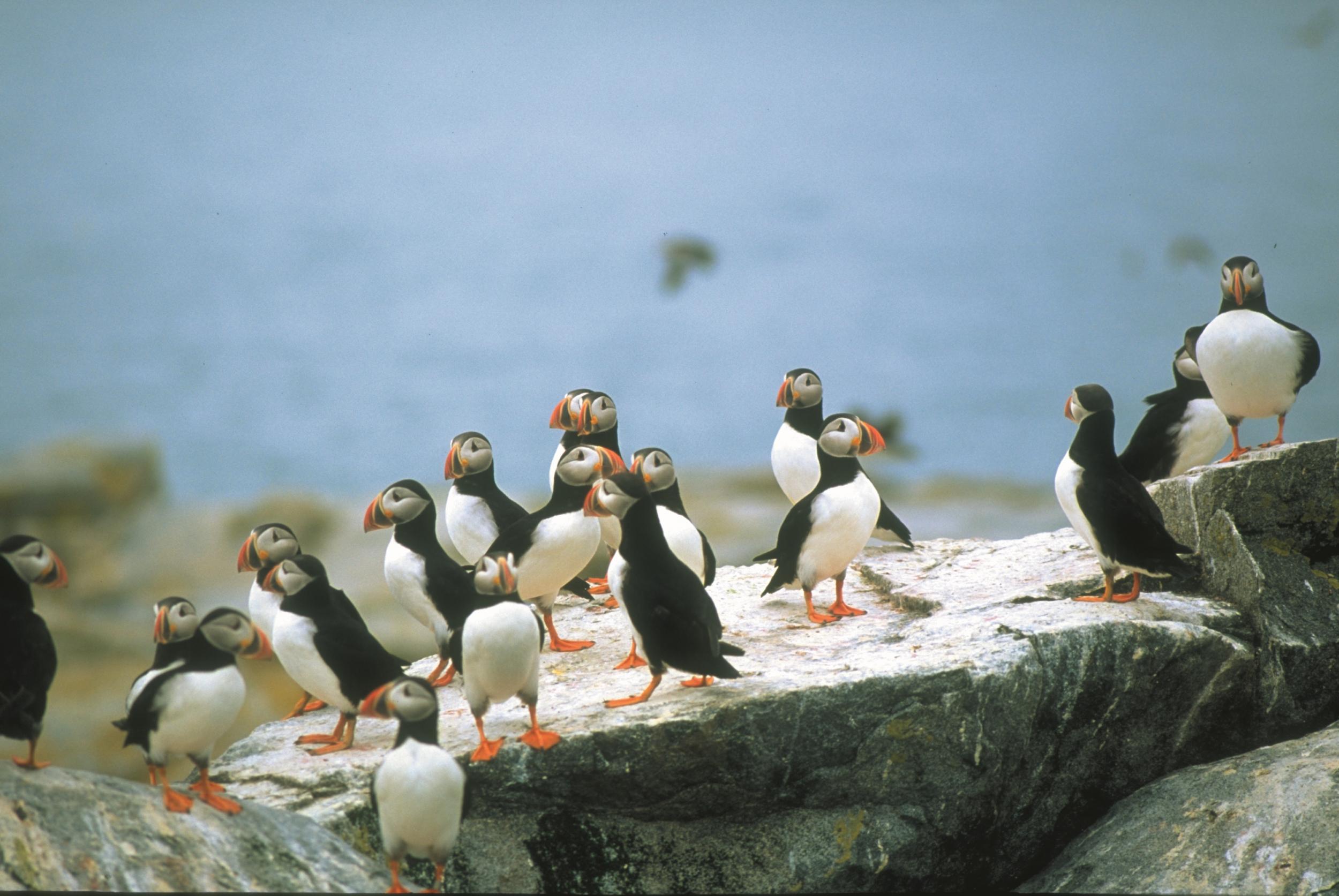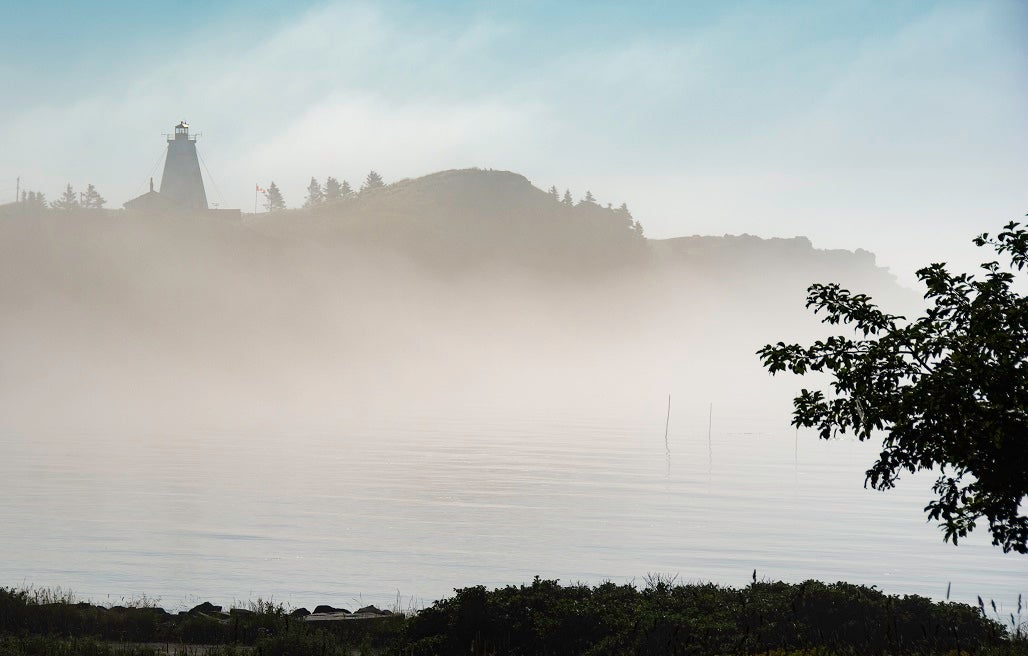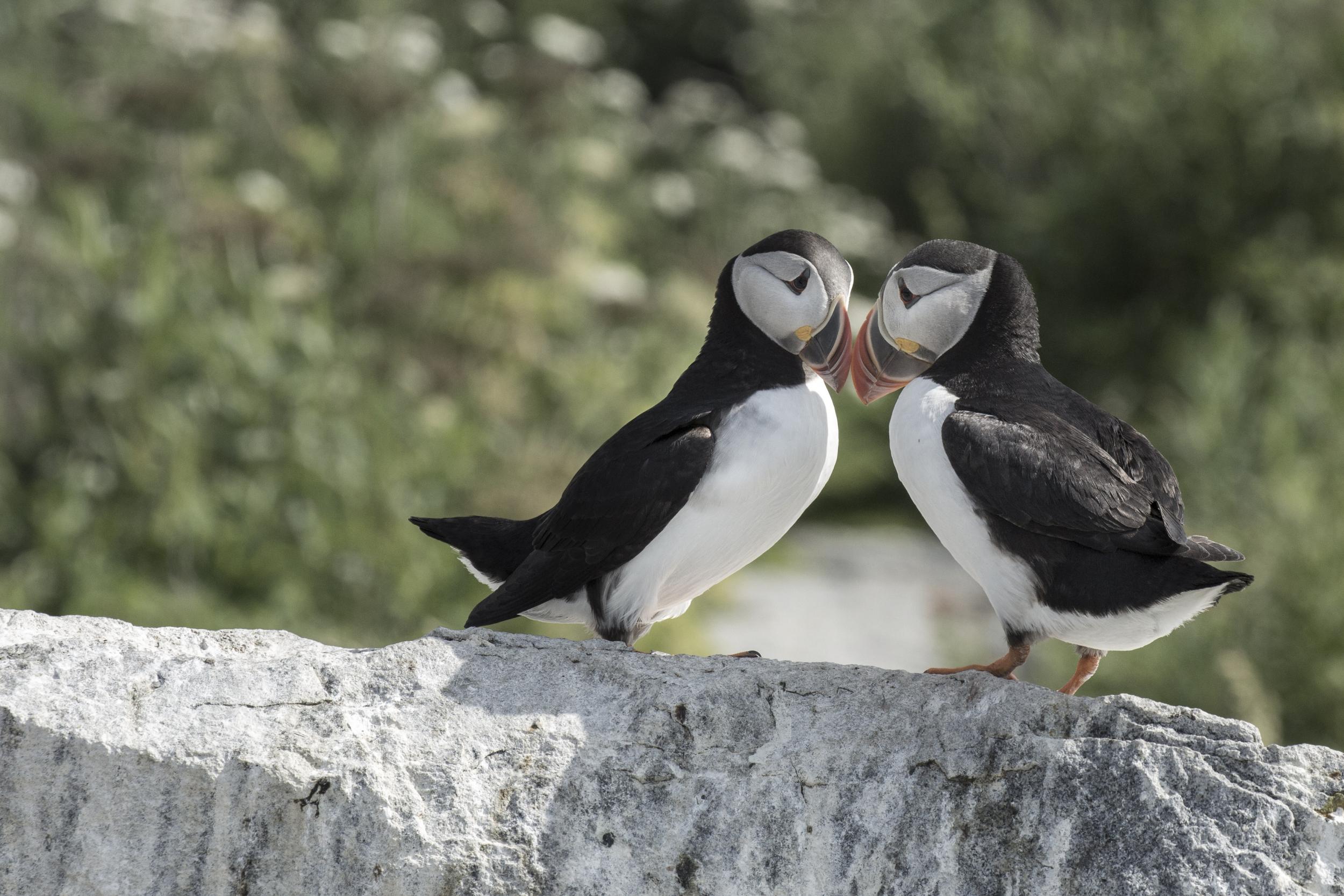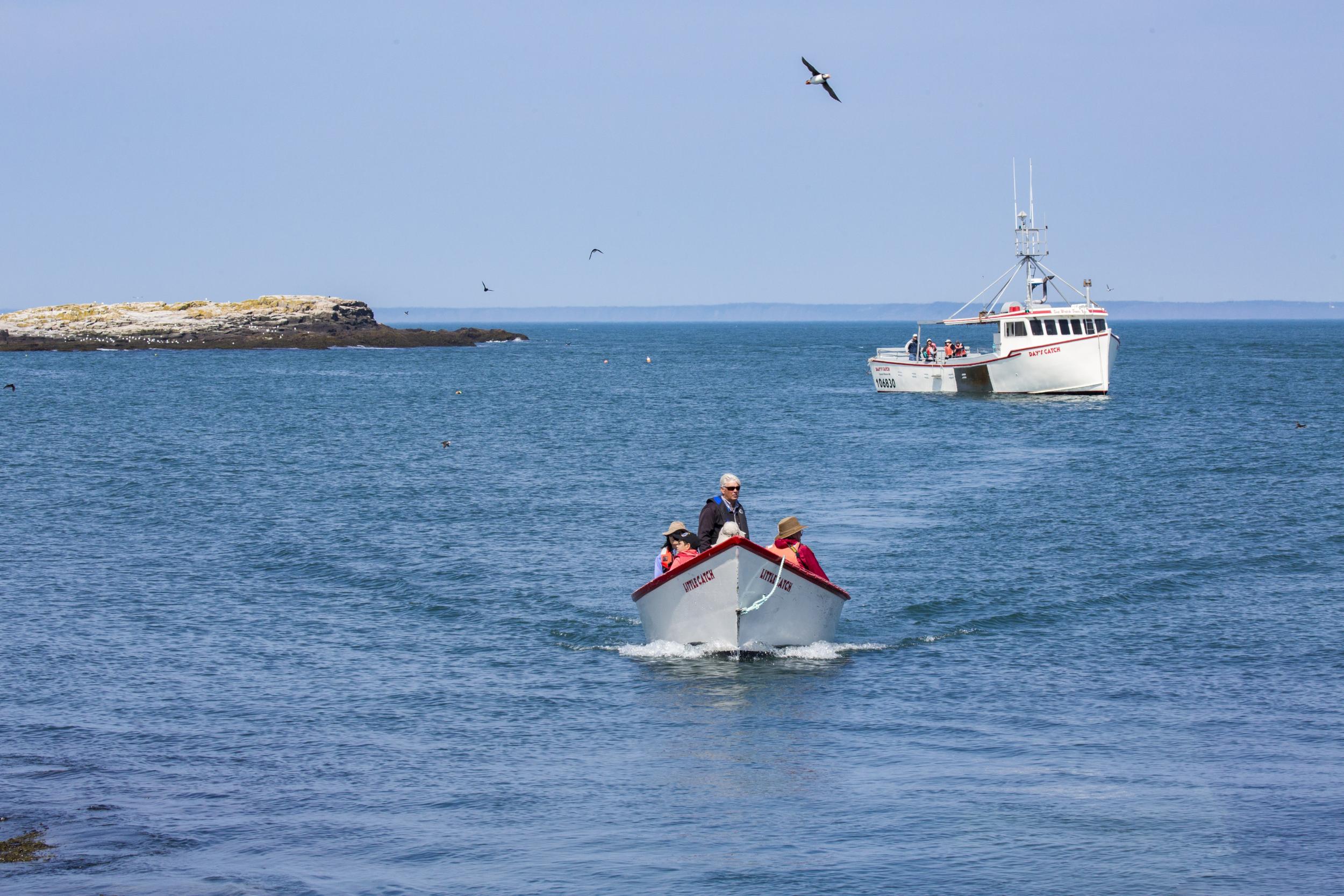Machias Seal Island: Why Canada and the US are fighting over this tiny bird sanctuary
This tiny spit of rock in New Brunswick’s Bay of Fundy is claimed by two countries. Lynn Houghton discovers the island’s fascinating history

It’s nearly 2.30am and the low-pitched moan of a foghorn has been sounding regularly for some time now. It emanates from the ancient Swallowtail Lighthouse perched on a spit of land known as North Head and permeates through the dense shroud of cloud that has settled over the island. The bleak warning has an ominous quality, particularly given the shipping accidents that have occurred here in the past. Every few minutes, the sound furtively creeps into our cottage on Whale Cove as we attempt to sleep. The mist covered cove is quiet, the water still, the only vessels visible a few empty kayaks.
After crossing on the ferry to get to Grand Manan Island, conditions have created a waiting game. With any luck, I will make it out to my destination, Machias Seal Island, but all depends on the weather gods. This mile-long speck of rock, about 30km out to sea, has no pier and its only structures are a lighthouse which was built and is maintained by the Canadian government, plus living quarters for two lightkeepers and students. The island is a well-known bird sanctuary and home to thousands of pelagic birds – including Razorbill Auks, Common Murres and Atlantic Puffins – during nesting season. But perhaps more interesting is the back story. Machias Seal Island (MSI) is disputed territory between Canada and the US, with both countries claiming ownership. The unresolved argument dates right back to the War of 1812 which was, basically, a continuation of the Revolutionary Way between loyalist (Great Britain) Canada and the fledgling United States.
Weather isn’t the only obstacle when sailing to Machias Seal Island. Another aspect to consider on the lower Bay of Fundy is extremely high tides – the highest in the world, in fact. When activated by the tidal activity, seas here collide with the Atlantic Ocean, creating turbulence and ferocious waves. So, the 14m-long MV Day’s Catch, with its petite skiff for tendering passengers (5m) only sails when weather and water allow.
This morning the fog lifts and the tour operator gives the signal that we are good to make the crossing. I grab my pack lunch and forge my way to Seal Cove to join the crew.
Seal Cove is a working harbour and the freshly painted white fishing boat, with its distinctive red lettering, is much smarter in appearance than the other seagoing vessels. I embark the Day’s Catch with enthusiasm despite the leaden skies overhead. Seal Cove is smooth as glass; though waves, sea spray, and bracing air greet us as we move further out to sea.

Captain Peter Wilcox owns the operation along with his wife, Kenda, and skippers the vessel in tandem with first mate, Durlan Ingersoll. Durlan also entertains our small group (only 15 people a day are allowed) with seaworthy stories and anecdotes, buoying us up with hot cups of tea.
After a relatively uneventful journey of just over an hour, a skinny slip of earth becomes visible with tens of dozens of birds circling above. With great excitement, we ready ourselves to board the tender and visit the temporary inhabitants.
We navigate the skiff across the short shoal of water and shimmy up a concrete dock that angles down to greet us. Navigating algae plus slippery seaweed that encrust the ramp and rocks, I manage to clamber up to shore... and immediately breathe in a smell that can only have been created by thousands of birds living on one big rock.
After a brief orientation (mainly about keeping our distance from the birds) our tiny group sequesters itself in a “hide” – plywood boxes with glassless windows – and waits for a chance to see the puffin activity up close.
This natural show is worth every penny of the trip, worth any perceived hassle. The puffins, with their unique orange and yellow facial markings, enormous beaks and pinched looking features, have an almost comical appearance. With oversized webbed feet they cavort and flutter all around us, with several even landing on top of the boxes. I also spot less colourful yet equally fascinating razorbill auks.
Previous participants have even seen Eider Ducks, brought back from the edge of extinction in the 1940s by keen local ornithologist Allan Moses.

But I must ask the million-dollar question. Beautiful as the birds are, why is this tiny island being fought over?
“It isn’t actually the island that is in dispute but the waters around it,” replies Captain Wilcox. “These waters are a grey zone and it’s this zone’s fishing rights causing the main controversy.
At the end of the War of 1812, the newly formed Boundary Commission returned sovereignty of Grand Manan Island to Canada but didn’t name the outer islands to be included. In 1979, it nearly reached the International Court of Justice at the Hague but was dropped in favour of a decision over other land.

“Both countries have agreed to disagree.”
It’s the lure of resources and lucrative fishing in the deep cold waters that make MSI worth fighting over. A divergence of fishing styles between the Canadians and their American rivals doesn’t help the issue. Canadians do not fish for lobster during the summer when they’re shedding their shells – Americans do, and heavily market the ‘soft shell’ version of lobster.
Another noteworthy feature of Grand Manan Island is advertised at its southern tip. A sign proclaims, “Flocks of Sheep”. This refers not to the bleating variety, but to erratic granite boulders just off shore – another dangerous feature of this coastline. The local museum is worth a visit if only to view the meticulous hand-drawn maps from the 19th century showing all the shipwrecks off of the island. Less treacherous is the sweet seaweed gathered at Dark Harbor and used as the seasoning known as Dulce.
New Brunswick along the Fundy Bay is a nature lover’s paradise. Add in two countries still at loggerheads over resources and the impact of incredible gravitational tidal forces at work, and the pull for visitors is irresistible.
Travel essentials
Frontier Canada offers a seven-night package to New Brunswick’s Fundy Bay from £1,535pp, including one night in Halifax, three nights in St Andrews, three nights on Grand Manan Island, eight days’ car hire with GPS and tank of fuel, plus return flights with WestJet from London Gatwick. Trip includes a puffin trip and whale watching excursion.
Ferry crossing to Grand Manan Island costs from CAD$35.80 (£22) per car plus CAD$12 (£7.50) per adult.
More information
tourismnewbrunswick.ca; destinationcanada.com
Join our commenting forum
Join thought-provoking conversations, follow other Independent readers and see their replies
Comments